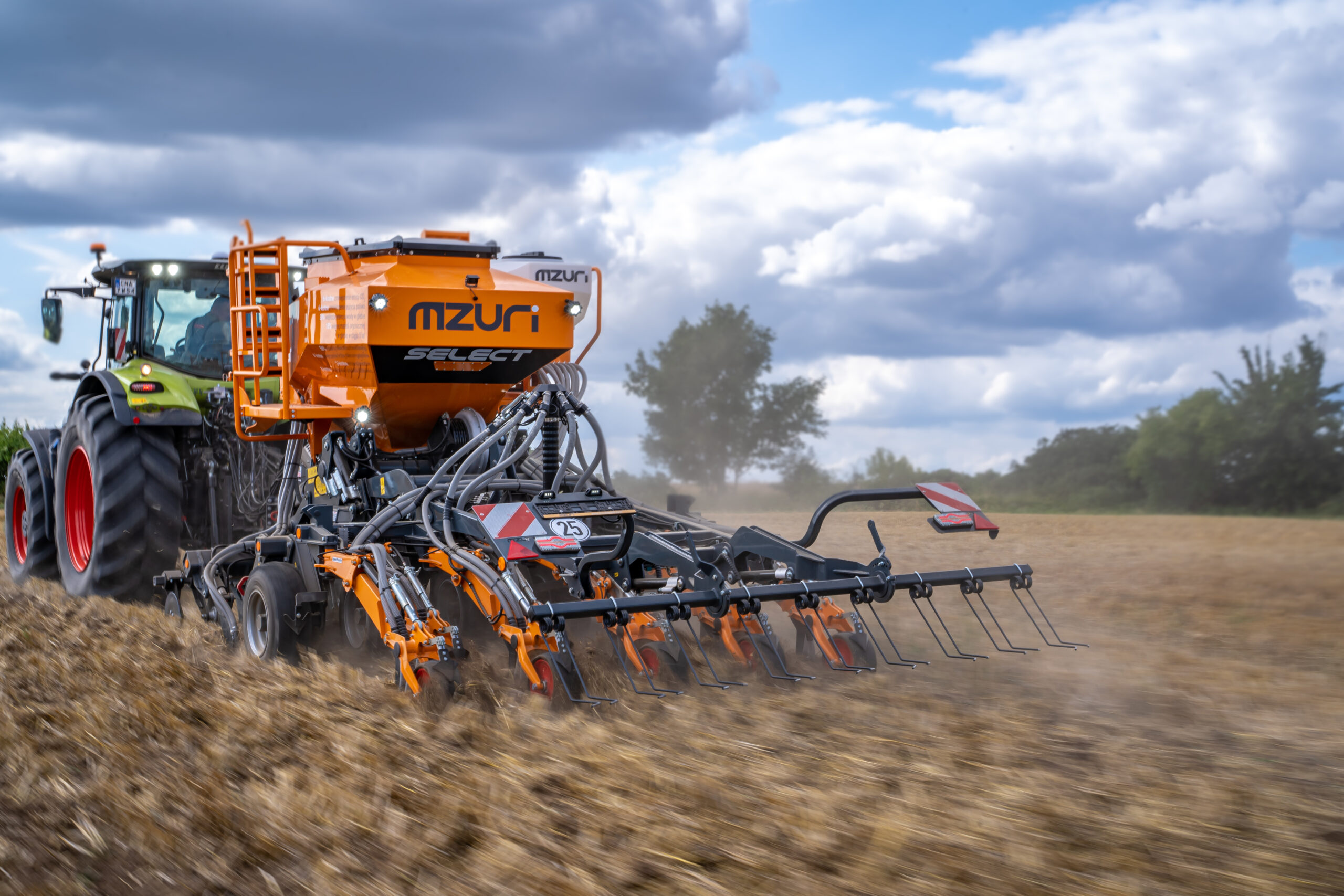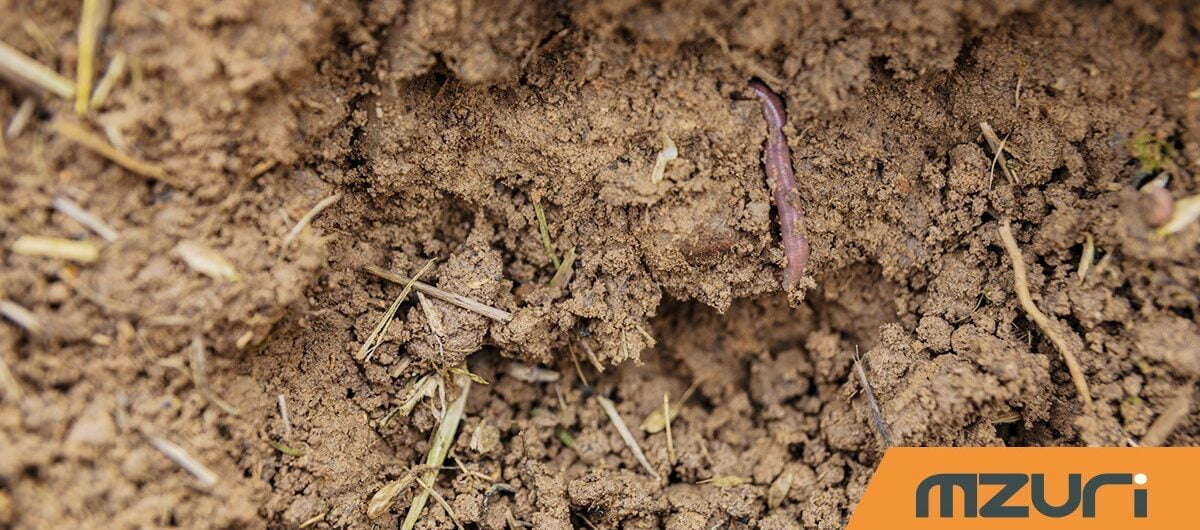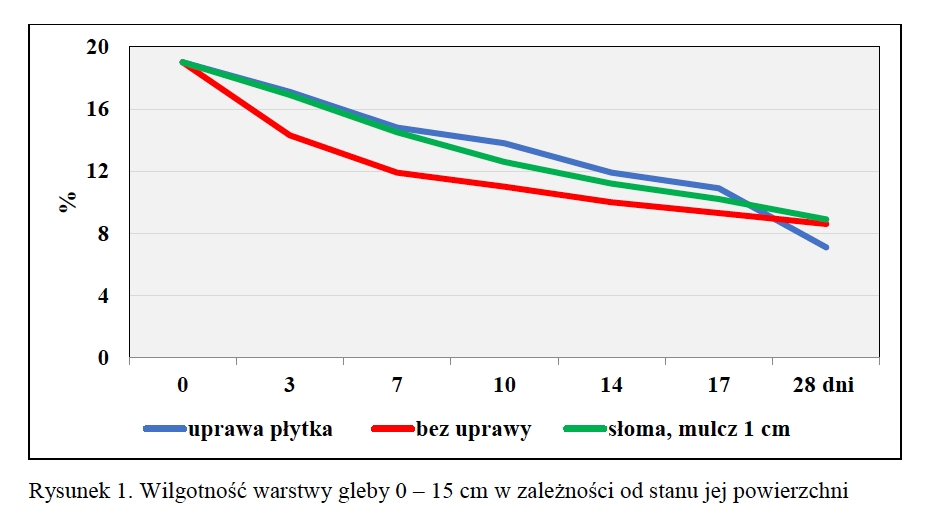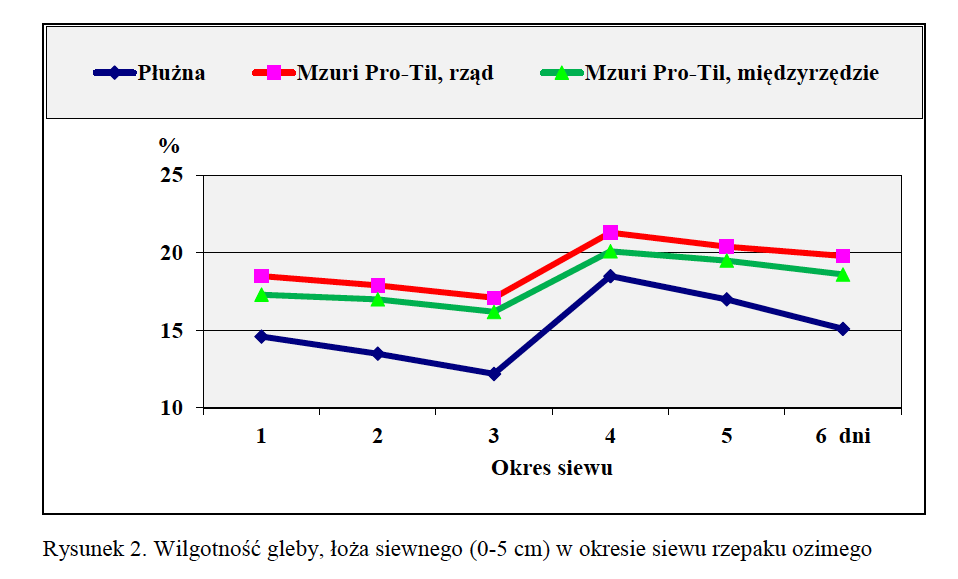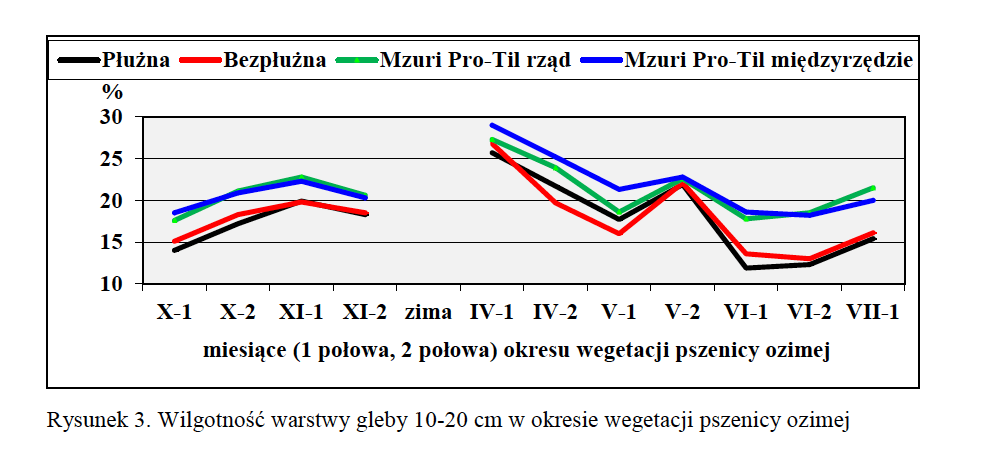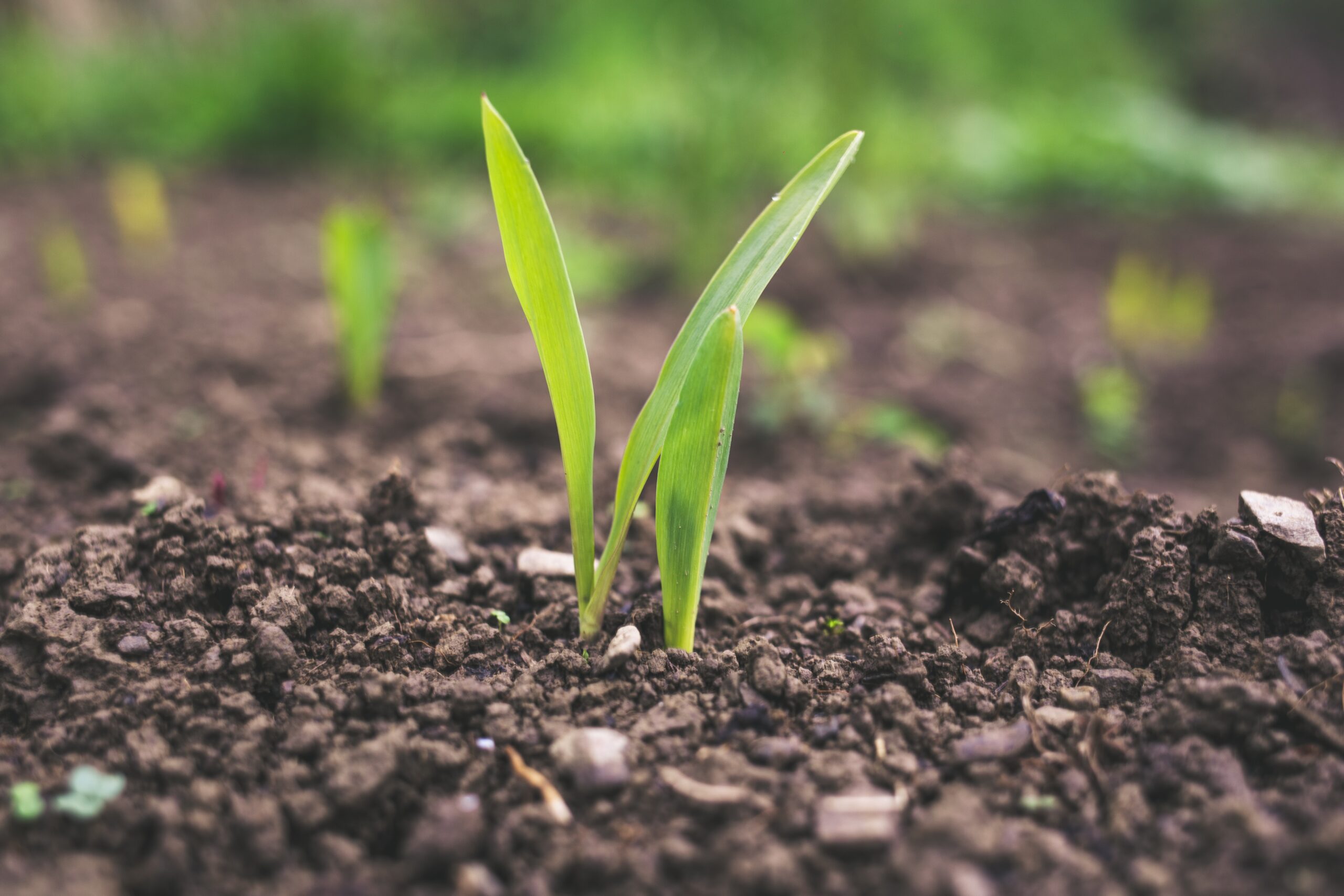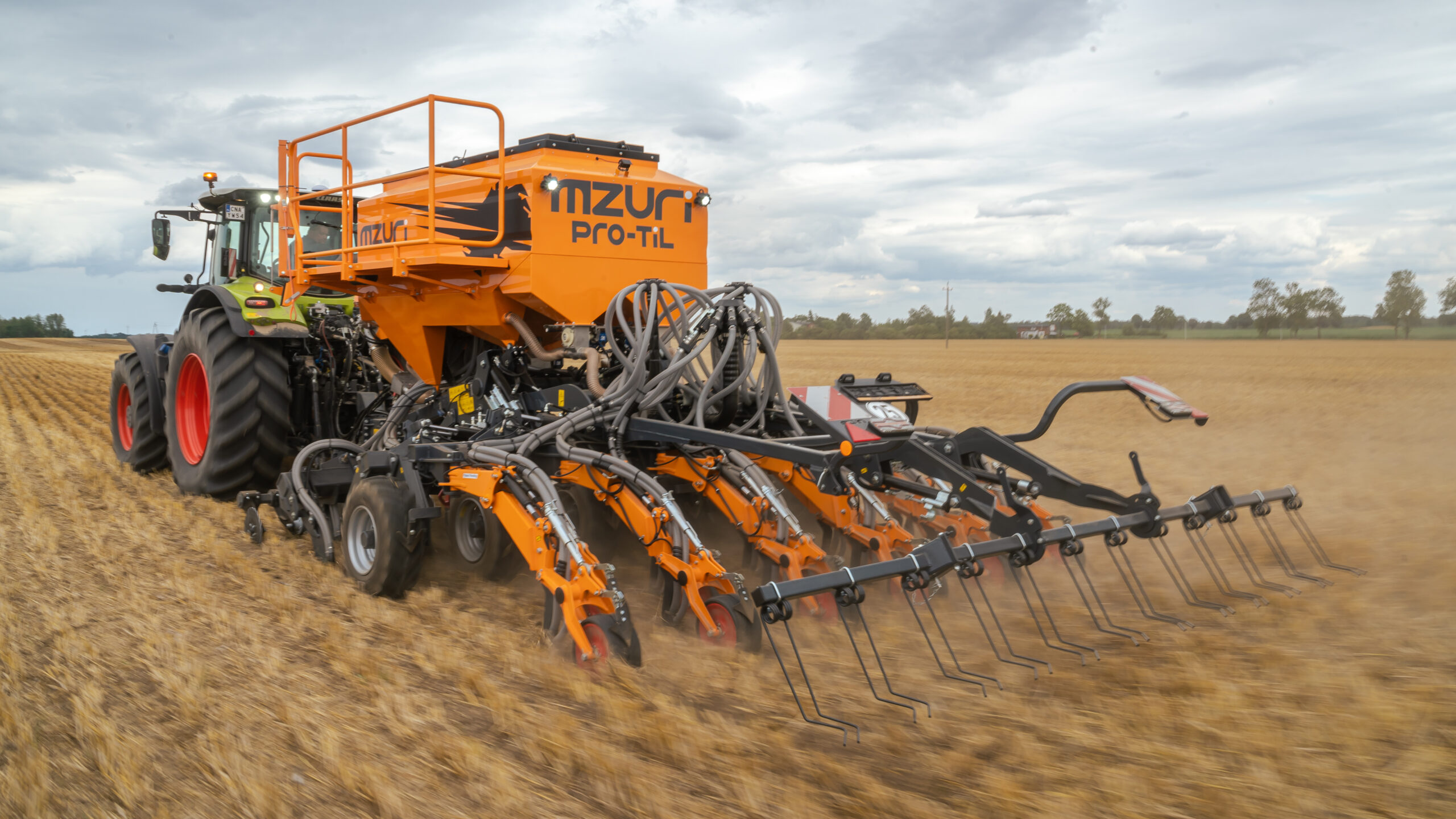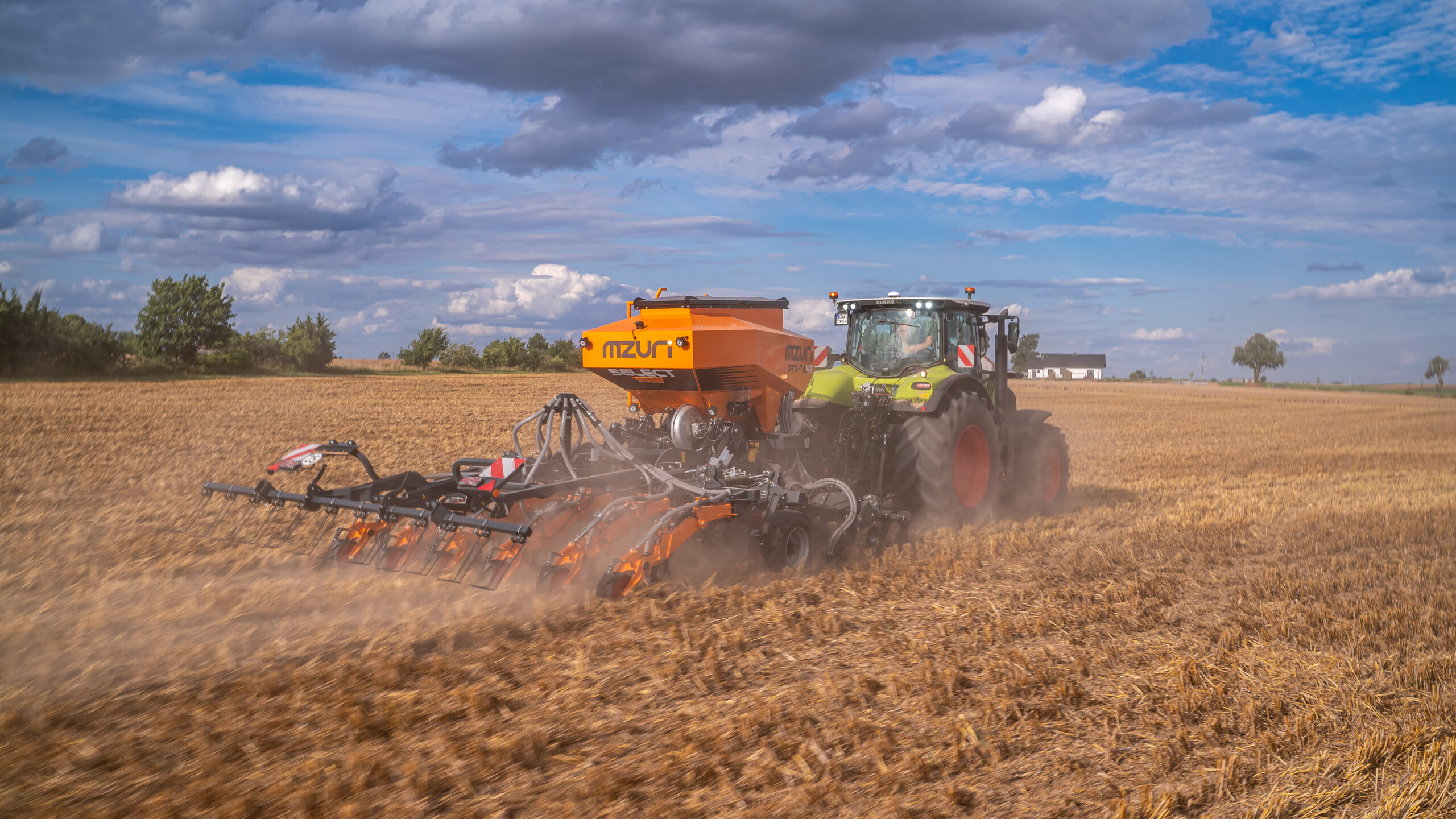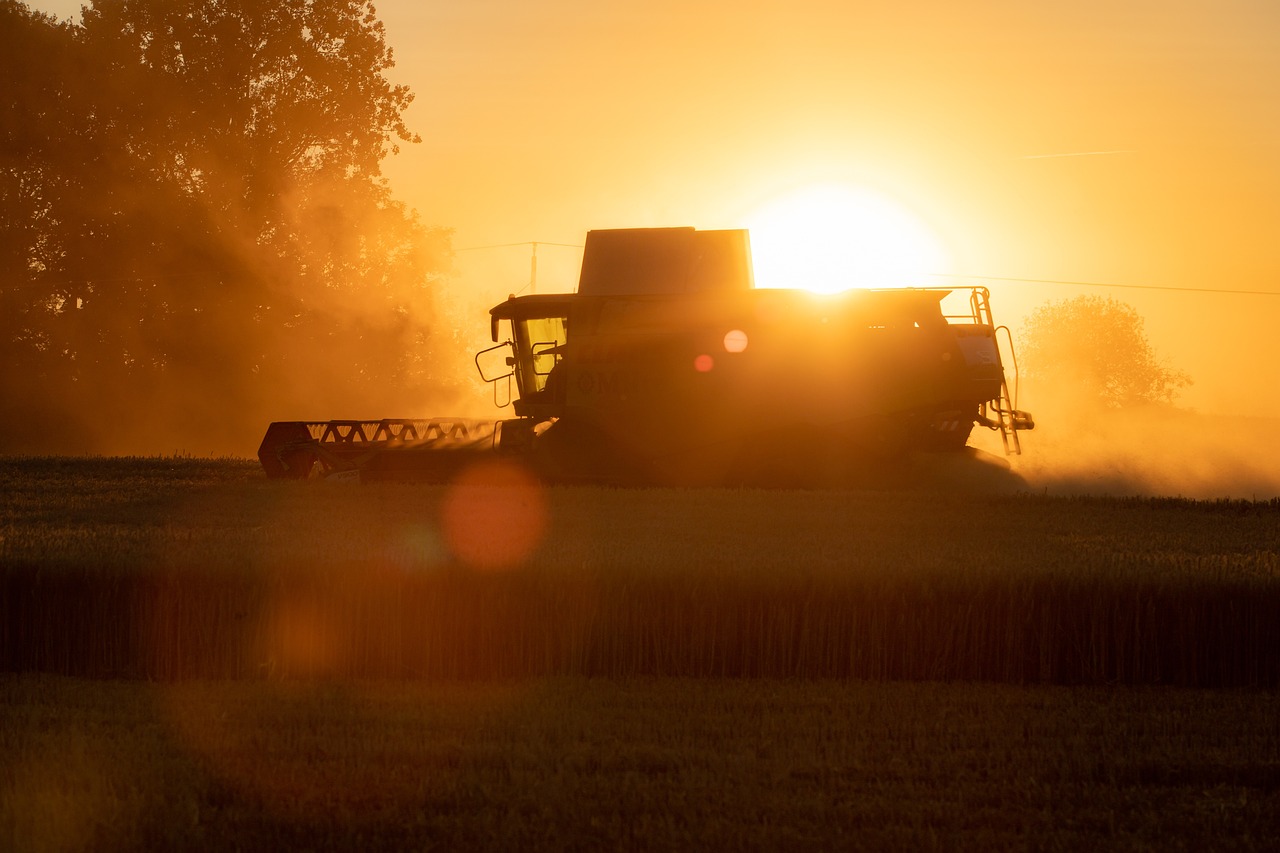Therefore, each component of cultivation technology should be utilised to make effective use of precipitation water retained in the soil. However, it is important to remember that plant growth and development factors work interdependently and that “much is not always good”. The best example of this is their effect on seed germination and subsequent plant growth. Seeds need a living embryo to germinate, but also water in the soil necessary for their imbibition and biochemical transformations, as well as sufficient oxygen, whereas the soil temperature should exceed the minimum for the species. One factor cannot replace the other, e.g. an excess of water in the soil will cause a shortage of air, as explained in the previous issue, and then the seed will not germinate. Germination also does not occur in soil that is too cold, despite sufficient water and air. Understandably, soil that is properly heated and aerated but lacks water also does not create the right conditions for seed germination. The water, air and thermal properties of the soil similarly affect subsequent crop growth. Therefore, it is important to create favourable water/air conditions from the beginning of the vegetation through tillage, whereas the seed drilling time and method should ensure proper thermal conditions.
With the Mzuri Pro-Til “single pass” technology, subsequent cultivations cannot correct any cultivation and technological errors made during previous treatments. Therefore, before execution, the pass should already be planned carefully at the time of harvesting the forecrop. Soil water deficiency occurs most frequently during sowing and initial growth of crops sown in late summer and early autumn, i.e. winter crops, as well as in late spring. In order to retain water in the soil, evaporation must be limited. A layer of mulch, e.g. shredded straw, should be kept on the soil surface or loosened so that water losses are not high. In the first case, it is important that the straw is well shredded and carefully evenly distributed over the entire field, and not just in strips behind the combine’s shakers. When straw is collected, the soil surface should be loosened.
należy spulchnić. This layer should be thin, if possible, of a few centimetres. After loosening, the soil dries out intensively, but the air it contains insulates the deeper layers and interrupts water evaporation. Studies under controlled conditions show that both mulch from shredded straw and soil loosening to a depth of 4-5 cm are effective in reducing water loss from the deeper soil layer. For 4 weeks after cereal harvest, the moisture content of mulched and loosened soil was several percent higher than that of soil left without loosening or cover (Fig. 1). In terms of post-harvest management, mulching seems to be the better option, as loosening dries out the surface layer of the soil, which in the case of the “one pass” technology is the seedbed. This is of particular importance when seed drilling is preceded by a long dry period. How loosening cultivation contributes to water loss in the absence of precipitation and high air temperatures is shown by a study of soil moisture during winter rape sowing (Fig. 2). The surface layer of soil ploughed and then prepared for sowing with a cultivating unit consisting of the cultivator’s tines and a string roller was by ca. 5% lower than the seedbed moisture content directly after seed drilling with the Mzuri implement, despite the fact that rain had fallen before rape sowing. The difference in favour of strip tillage on a field with mulched shredded straw is even greater if there is no rain before and immediately after sowing. In such cases, soil that has been ploughed or deep-loosened without ploughing, and then loosened again immediately before sowing dries out heavily, especially in the surface layer. Sown seeds fail to germinate or, worse, germinate and die because the embryonic roots miss the moist soil. In the “single pass” technology, as soon as the winter wheat was harvested, the soil was covered with a thin layer of shredded straw. This preserved residual water in the deeper layers and reduced evaporation from the surface. Once the strips of land were loosened, the soil was immediately compacted without having a chance to dry out before the oilseed rape seeds were placed in it. Under these conditions, emergence was rapid and uniform. On the other hand, the soil in the interrows was not loosened at all, and moreover, it was covered with a several centimetre layer of loose soil moved away from the row zone by the wings of sowing coulters. This soil was therefore a source of water for the expanding lateral roots of rape. Such a beneficial effect of strip-till technology on soil water properties becomes visible especially under conditions of rainfall deficit. In years of abundant rainfall, when the soil is moist and water is available to the crops, the tillage method is less important.
The effect of strip-till technology on soil moisture in a low rainfall year is well illustrated by its measurements throughout the winter wheat growing season (Fig. 3). Orka lub głęboka
Ploughing or deep ploughless tillage supplemented with surface levelling and loosening cultivation before sowing resulted in soil drying that lasted until the end of autumn vegetation period. In this period, when in the second half of September, October and November the precipitation was lower than average, the soil in the wheat rooting layer (10-20 cm) after strip tillage was several percent higher, both in its rows and between rows, than after ploughing and zero tillage. In late autumn, winter and especially March abundant rainfall with a lack of water uptake by plants and limited evaporation due to low temperatures resulted in wet soil in spring when vegetation resumed. Its moisture content was about 26-29% and did not depend much on tillage. Soil tillage and sowing technologies had no effect on soil moisture also in the period of heavy rainfall, i.e. in the second half of May. On the other hand, in the periods of intensive plant growth and high water uptake, increased evaporation due to increasingly higher temperatures and simultaneously low precipitation, soil moisture after strip tillage was higher than after ploughing and zero tillage. There was a particularly large difference in June and the first half of July when there was a rainfall deficit. At that time the precipitation was only about 50% of the average in the study area. The above observations made during the whole winter wheat vegetation period and even during several weeks of site preparation after forecrop harvest confirm that the Mzuri Pro-Til technology combined with shredded straw mulch on soil, similarly to strip tillage in other studies, has a favourable effect on soil moisture and effective use of precipitation water. This is of particular importance in regions and years with high precipitation deficits and their inadequate distribution during the vegetation period of crops, so often occurring in Poland.
When characterising the effects of “single pass” technology on soil moisture in terms of crop optimisation, one should not forget the relationship between soil temperature and water content. Very wet soils are cold, and it takes a lot of heat to warm them up. This is particularly important during sowing in early spring, as well as for plants with high thermal requirements, e.g. maize, soya bean. The lack of loosening and aeration of the soil before seeding in strip tillage causes the soil to warm up a little slower. Therefore, seed drilling should be done when this soil has reached the right temperature for the crop. This generally occurs a few days later than on intensively loosened soils. However, a significant delay in the vegetation of these plants should not be an issue, because the emergence is rapid and uniform due to no water shortages in the soil. This technology also reduces the risk of water shortages when the rainless period occurs in late spring.
